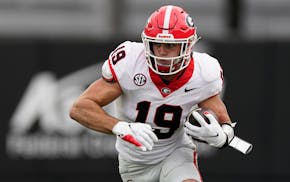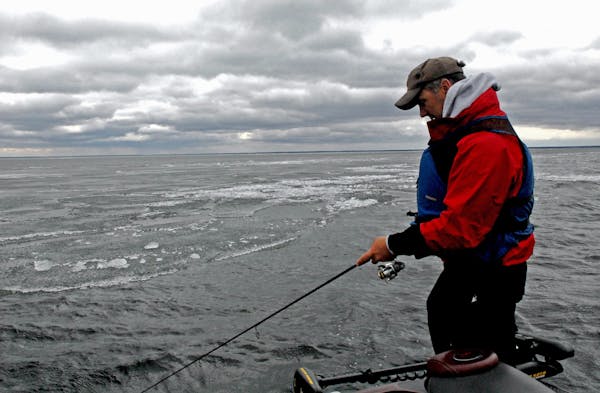Enough about high taxes, traffic jams and the winter without end in Minnesota. It's time for some good news:
In the coming weeks, upward of 35,000 of us will be rolling out of bed hours before dawn (yes, this is good news) to slap on camouflaged outfits, dose ourselves in deer tick repellent and insert-in-mouth something called a diaphragm turkey call. Next, we will march into a black forest to find a seat without thorns at the base of a tree we still can't really see.
Now the good news gets even better.
To greet the dawn, we will blow (not swallow) said mouth call trying to imitate the seductive sounds of a wild hen turkey. (Obviously, because this is a family newspaper, we cannot divulge exactly what the hen is saying, except — believe me — a male or tom turkey who has spent the night alone in an oak tree is apt to gobble with joy upon hearing this X-rated conversation.)
If your hen talk sounds promising — not too loud, not too often — the gobbler might appear in all of his spring mating splendor, chest puffed, tail fanned and ready to get it on.
Then, you shoot him.
Now, now, don't start crying. A few million domestic turkeys die every Thanksgiving, and they never had a chance to get it on. And you don't cry before bird carving, do you?
And remember this: More good news. The presence of wild turkeys in Minnesota is one of the state's greatest conservation achievements over the past 50 years.
Once upon a time, by the late 1800s, this native bird was extirpated from the state's landscape. That means gone. Wild turkeys were nowhere to be found in Minnesota, a condition that lasted nearly 100 years, despite repeated attempts in the mid-1900s to establish pen-raised birds in the wild.
Minnesota's efforts to restore wild turkey flocks continued to fail until the early 1970s, when two moments in turkey history came together. First, Minnesota obtained about 29 wild Eastern turkeys from Missouri and released them in Houston County.
The second moment occurred in, of all places, the Black Hills of South Dakota. A small band of Minnesotans (and I was one of them) gathered there every April to experience wild turkey hunting. My very first turkey hunt was in the spring of 1967 in the Black Hills.
Back in Minnesota, the DNR had little budget to spend on turkeys, especially considering the bird's poor restoration track record. Roger Holmes, then the DNR wildlife chief, told me that if we wanted more turkeys in Minnesota we'd have to find a way to pay for it ourselves.
So we did. In 1975, we formed the first Minnesota chapter of the National Wild Turkey Federation in the back room of Nybo's Restaurant in Red Wing. I was elected to be the chapter's first state president on the grounds I called the meeting (there was no democracy in those days).
All of us at that meeting had experienced the addiction of turkey hunting. Among them, Bob Nybo, John Beard, John Clark, Bill Porter, the late Les Kouba, Ken Berglund and Chuck Thompson and others whose names unfortunately escape me.
We had one goal: raise money to help DNR expand its turkey transplant program. And we did. We paid DNR's turkey trappers, led by Gary Nelson, who eventually trapped and relocated thousands of turkeys into new habitats. Nelson's work was cold and miserable, waiting for birds to be baited into a trap. "We sat in the woods wrapped in blankets to keep warm because we didn't have heated blinds,'' Nelson once recalled. Our fledgling chapter also paid for corn food plots on private farmland in turkey country.
In the early going, the money raised by this one NWTF chapter was arguably DNR's entire turkey management budget. But it was enough. In the spring of 1978, Minnesota opened its first modern turkey session and issued 420 permits. Nearly 11,000 Minnesotans applied for a license.
The rest is history, as they say.
According to DNR, the state now supports roughly 75,000 wild turkeys. This spring once again they'll be clucking and gobbling in woods and fields from Bemidji to Caledonia. And just as certain, thousands of turkey hunters will be trying to imitate the same sexy calls.
It's addictive.
Don't forget to set the alarm.
Ron Schara, a former Star Tribune outdoor columnist, is host of the "Minnesota Bound" television show.

